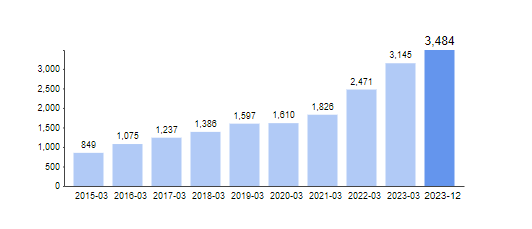20 Top Pieces Of Advice For Choosing AI Stock Trading Websites
20 Top Pieces Of Advice For Choosing AI Stock Trading Websites
Blog Article
Top 10 Tips For Assessing The Integration And Compatibility Of Ai Analysis Of Stocks And Predicting Trading Platforms
Integrity and compatibility are the most important elements to be considered when evaluating AI software for stock forecasting and analyzing trading platforms. Integrating your platform into existing systems, tools, and workflows is a fantastic way to boost efficiency. Here are the top 10 suggestions for evaluating the integration and compatibility of these platforms:
1. Check Brokerage Integration
Supported brokers - Make sure that the platform you choose to use is linked to your brokerage or trading account.
Trade Execution: Verify whether the platform allows direct trade execution through the integrated broker.
Account synchronization: Make sure that the platform can update in real-time balances and positions of your account as well as transaction histories.
2. Check the API Availability
API access is essential: Developers can use an API, or Application Programming Interface (API) to develop their own software and automate processes.
API documentation: Check for examples of how the API is used.
Rate limits: Determine if the API has reasonable rates and is able to handle your anticipated amount of usage.
3. Review the integration of third-party tools
Popular tools: Check whether your device is compatible with the most popular tools like Google Sheets or Excel.
Data export/import: Ensure the platform permits easy export and import of data into and out of other tools.
Plugins/extensions: Verify if the platform supports extensions or plugins to add features.
4. Test Compatibility with Operating Systems
Desktop compatibility - Ensure that the system you select can be used with Windows, macOS and Linux.
Mobile compatibility: Find out if the platform offers mobile apps for iOS and Android.
Access via the internet (for additional flexibility) Verify that the platform is accessible using a webbrowser.
5. Assessing the Data Integrity Capabilities
Data sources: Make sure the platform is able to integrate various sources of data, including the market data providers, RSS feeds and sentiment on social media.
Real-time Data Feeds Check to determine if your application provides real-time analysis.
Find out if the platform is able to import data from the past.
6. Check cloud and on-premise compatibility
Cloud-based platforms: Ensure the platform is available from any location with an internet connection.
On-premises Solutions: If you would rather deploy on premises ensure that your platform is compatible.
Hybrid models: Determine whether the platform is cloud-based and on-premise capabilities.
7. Check for Cross Platform Syncronization
Device synchronization. Ensure data and settings are synced across all platforms (desktops tablets and mobiles).
Check that changes made on one device immediately reflect on other devices.
Offline access - See whether you are able to access restricted functionality or data in the event that the platform isn't accessible.
8. Evaluation of compatibility with trading strategies
Automated trading strategies or algorithmic ought to be supported by the platform.
Custom indicators: Make sure that your platform supports the use of scripts or indicators that are specific to your needs.
Backtesting strategies. Check whether the platform supports strategies for backtesting based on the past data.
9. Examine Security and Compliance
Data encryption: Ensure the platform uses encryption for information in transit as well as in rest.
Authentication Verify whether the platform is secure in terms for authentication (e.g. Two-factor authentication).
Regulatory compliance: Check if the platform complies with relevant laws (e.g. GDPR, FINRA, SEC).
10. Test Scalability Performance
Scalability is important. The platform needs to be able handle the growing quantity of data, as well as the the increasing number of users.
Performance when under stress: Check if your platform responds well to conditions of high volatility in the market.
Resource usage: Verify that the platform is using system resources efficiently (CPUs, memory, bandwidth).
Bonus Tips
Customer feedback: Read user reviews and testimonials to assess the integration capabilities of the platform.
Free Trial: Experience the platform's integration with the existing workflow and tools with the demo or trial.
Customer Support: The platform should provide solid support for integration issues.
These guidelines will help you assess the compatibility and integration of AI analysis and stock prediction platforms. This will ensure that they are compatible with your current systems, and improve your trading efficiency. See the most popular best ai for stock trading advice for site tips including ai stocks, best stocks to buy now, best ai copyright to buy, ai copyright signals, invest in ai stocks, chart analysis ai, trader ai intal, chart ai trading, best ai stocks to buy now, best stock analysis app and more.
Top 10 Tips For Evaluating The Social And Community Features Of Ai Stock Prediction/Analyzing Trading Platforms
It is essential to comprehend how users communicate, exchange knowledge and gain insights from one another by assessing the community and social features of AI-driven prediction platforms and trading platforms. These features can enhance the user experience through providing important assistance. Here are 10 tips for evaluating the social and community aspects of these platforms.
1. Active User Communities
Tip: Check if the platform is active with a user base that regularly engages in discussion, shares information, and provides feedback.
Why: An active user community reflects a vibrant community where users can exchange knowledge and learn together.
2. Discussion Boards and Forums
You can evaluate the quality of a discussion forum or message board by looking at its activity levels.
Why: Forums allow users to discuss strategies, ask questions and debate market trends.
3. Social Media Integration
TIP: Check if the platform is compatible with other social media platforms (e.g. Twitter and LinkedIn) to provide information and updates.
Why: Integration of social media with other platforms can boost engagement and provide information on market trends in real-time.
4. User-Generated Materials
Find features that allow users to share, create and modify content.
Why? User-generated content fosters collaboration and offers diverse perspectives.
5. Expert Contributions
Tip - Check whether the platform includes contributions from industry experts like market analysts or AI experts.
Why: Expert insight adds credibility and depth to discussions in the community.
6. Real-time Chat and Messaging
TIP: Check the availability of live chat or messaging services to facilitate instant communication between users.
Why: Real-time interaction facilitates quick data exchange and collaboration.
7. Community Modulation and Support
Tip: Determine the level and kind of support that is offered by your local community (e.g. Moderators or representatives for customer service).
How do you know? A well-balanced moderation strategy can help to create a positive and respectful atmosphere. Help is readily ready to address issues swiftly.
8. Webinars and Events
TIP: Make sure to check whether the platform is hosting events, webinars or live Q&A with experts.
What's the point? These events provide a good opportunity to learn about the business and make direct contact with professionals.
9. User Reviews and Feedback
TIP: Keep an eye out for features which allow users to give feedback or opinions about the platform and its features.
The reason: Feedback from users helps determine strengths and areas for improvement within the ecosystem.
10. Gamification and Rewards
Tip: Check to see whether your platform offers gamification (e.g. leaderboards, badges) or rewards that are offered to those who participate.
The reason: Gamification can encourage users to become more involved with the community and its platform.
Bonus Tip Tips for Privacy and Security
Make sure that security and privacy features that are used for social and community functions are secure to safeguard the privacy of data and user interactions.
You can test these features to decide whether the AI trading and stock prediction platform has the community you need and helps you trade. Check out the recommended using ai to trade stocks examples for more examples including trade ai, ai for investing, stocks ai, best ai copyright, best ai stock, best ai stocks to invest in, ai investing tools, ai investment stock, best ai stocks, ai copyright trading and more.